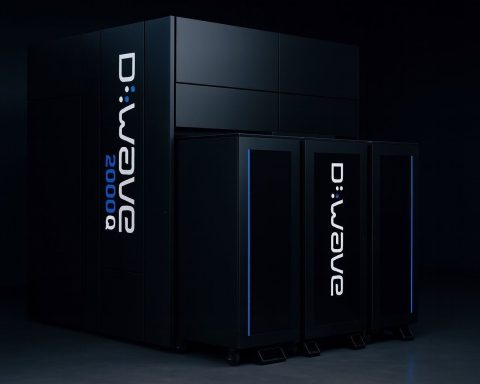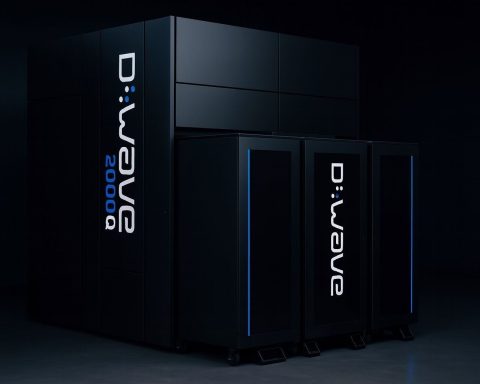- Scientists used Google’s superconducting quantum processor to simulate gauge-theory particle interactions, illustrating how particles and the connecting strings behave, fluctuate, and even break, per remarks by Prof. Michael Knap of TUM.
- ICFO demonstrated a 10-qubit quantum RAM prototype—an array of ten memory cells that can store multiple qubits and retrieve them on demand, building on a prior record of 250 storage slots for photons.
- In Japan, Shibaura Institute, Waseda University, and Fujitsu presented a method to control a humanoid robot’s posture by encoding each robot link’s orientation as a qubit, achieving a 43% reduction in error on Fujitsu’s 64-qubit simulator and confirming entanglement advantages on a 64-qubit computer with RIKEN.
- An Israeli team from Ben-Gurion University levitated nanodiamond crystals in quantum superposition by controlling nitrogen-vacancy spins, splitting a million-atom nanodiamond into two states separated by nanometers to probe quantum gravity and the equivalence principle.
- Researchers at Delft University of Technology coated niobium surfaces with a self-assembled monolayer of organic phosphonates to suppress oxide regrowth, helping maintain longer qubit coherence while unprotected resonators showed about an 80% increase in energy loss at single-photon levels.
- Strangeworks announced it acquired Quantagonia to combine its quantum cloud platform with Quantagonia’s HybridSolver engine, backed by IBM and Hitachi investors, aiming to create a global leader in applied quantum computing solutions.
- IonQ reported its IP portfolio surpassing 1,000 patents and patent applications, including portable quantum memory for long-distance links and photonic integration techniques, aided by acquisitions of ID Quantique and Oxford Ionics.
- Morgan Stanley disclosed a 7.1% ownership stake in IonQ, equating to about 18.6 million shares as of Q2, a 290% increase over the prior quarter.
- QuamCore, a stealth-mode Tel Aviv startup, unveiled a plan to build a one-million-qubit superconducting quantum computer after a $26 million Series A round plus a $4 million government grant, proposing a single-cryostat architecture to scale to 1,000,000 qubits.
- Australia’s Department of Defence announced AU$9 million in ASCA contracts to advance home-grown quantum capabilities, including CSIRO developing quantum machine-learning for adversarial attacks and Silicon Quantum Computing building a domestically developed quantum ML processor for defense use.
In a whirlwind 48 hours, the quantum technology world saw rapid-fire advances across research labs, corporate boardrooms, and government offices. From scientific breakthroughs edging us closer to quantum gravity tests and quantum random-access memory, to big business moves and funding bets by major players, to government initiatives aiming to secure a quantum edge – these two days captured the full spectrum of quantum tech’s evolution. Below is a comprehensive roundup of all the major quantum-related news from August 25–26, 2025, organized by category and featuring direct expert insights on what it all means.
Scientific and Academic Breakthroughs
- Simulating the “Hidden Strings” of the Universe: Scientists used Google’s superconducting quantum processor to simulate fundamental particle interactions described by gauge theories, showing how particles and the invisible “strings” connecting them behave, fluctuate, and even break [1]. “Our work shows how quantum computers can help us explore the fundamental rules that govern our universe,” said Prof. Michael Knap of TUM, noting the experiment marks a leap in using quantum computing to probe particle physics and even the nature of space-time [2].
- 10-Qubit Quantum RAM Prototype: Researchers at ICFO demonstrated an array of ten individually controllable quantum memory cells that can store multiple qubits simultaneously and retrieve them on-demand [3]. This solid-state system (reported in Physical Review X) builds on a prior record of 250 storage “slots” for photons – the world record for on-demand retrieval in a solid-state device [4]. The advance is a major step toward a true quantum random-access memory, and could enable large-scale entangled states for quantum computing or dramatically improve long-distance entanglement distribution for a future quantum internet [5].
- Quantum Boost for Robot Control: In Japan, a collaboration between Shibaura Institute, Waseda University, and Fujitsu developed an innovative method to control a humanoid robot’s posture using quantum computing [6]. By encoding each robot link’s orientation as a qubit and leveraging quantum entanglement to mimic how parent joints affect child joints, the team drastically reduced the computations needed for inverse kinematics (finding joint angles for a desired position) [7] [8]. Tests on Fujitsu’s 64-qubit quantum simulator showed a 43% reduction in error with far fewer calculations than classical methods, and a 64-qubit quantum computer (co-developed with RIKEN) confirmed the entanglement advantage [9] [10]. “By expressing the orientation and position of each robot link as a qubit, and replicating the structural influence of parent joint movements on child joints through quantum entanglement, the number of necessary calculations was significantly reduced compared to conventional methods,” the team explained, adding that this quantum approach is expected to enable real-time control of next-generation robots with complex movements [11].
- Levitating Nanodiamonds to Probe Quantum Gravity: Pushing the boundaries of physics, an Israeli team (Ben-Gurion University) put nanodiamond crystals into quantum superposition to explore the interface of quantum mechanics and gravity [12]. By precisely controlling the spins of nitrogen-vacancy centers in tiny levitated diamonds, they split a million-atom nanodiamond into two quantum states separated by only nanometers – an object visible under a microscope being in two places at once [13]. This achievement marks a significant step toward testing quantum gravity and fundamental physics (e.g. verifying the equivalence principle), and the researchers plan to use the ultra-sensitive setup to hunt for exotic phenomena like dark matter interactions [14].
- Long-Lived Qubits via Oxide Suppression: Tackling a key hurdle in superconducting qubit stability, researchers at Delft University of Technology unveiled a technique to prevent surface oxide regrowth on niobium circuits, dramatically improving coherence. By coating niobium surfaces with a self-assembled monolayer of organic phosphonates, they suppressed the re-oxidation that normally introduces energy loss [15]. Passivated quantum resonators maintained their performance over several days in air, whereas unprotected ones saw about an 80% increase in energy loss at single-photon levels [16] [17]. This advance (detailed in an arXiv preprint) paves the way for more robust, long-lived superconducting qubits, an important step toward large-scale quantum processors where long-term stability is essential [18] [19].
Business and Industry Developments
- Strangeworks Acquires Quantagonia in Quantum M&A: In a sign of consolidation in the quantum industry, Texas-based startup Strangeworks announced it has acquired Germany’s Quantagonia, an enterprise software firm specializing in hardware-agnostic quantum/classical optimization. The deal (revealed in late August) combines Strangeworks’ user-friendly quantum cloud platform with Quantagonia’s powerful HybridSolver engine, aiming to create a “global leader” in applied quantum computing solutions for problems like scheduling and logistics [20]. The merged company – backed by investors including IBM and Hitachi – will offer one-stop tools that choose the best backend (quantum or classical) for a given problem [21]. “Acquisitions that leverage quantum’s performance to solve real-world problems are the next milestone in the maturation of the QC sector,” observed Hyperion Research analyst Bob Sorensen, predicting more such strategic mergers as the field grows [22].
- IonQ Amasses 1,000+ Quantum Patents: Trapped-ion computing leader IonQ announced that its intellectual property portfolio now exceeds 1,000 total patents and patent applications, after a batch of new U.S. patents were granted in August [23]. This milestone, which the Maryland-based company says gives it a broad “patent moat,” spans innovations from quantum networking hardware (like portable quantum memory for long-distance links) to photonic integration techniques for its processors [24] [25]. “IonQ’s robust and growing portfolio of patents is a direct result of the strategy set forth years ago – developing and owning quantum technologies across multiple industries and applications,” said IonQ Chairman and CEO Niccolò de Masi, adding that this IP will help them build “scalable, high-performance, cost-effective” quantum systems faster [26]. (IonQ’s patent count has been bolstered by recent acquisitions of firms like ID Quantique and the pending takeover of Oxford Ionics [27].)
- Wall Street Bets on Quantum – Morgan Stanley’s IonQ Stake: A regulatory filing revealed that Morgan Stanley has acquired a 7.1% ownership stake in IonQ, making the financial giant one of the company’s largest shareholders [28]. The disclosure, from an SEC Schedule 13G in August, showed Morgan Stanley Investment Management holds about 18.6 million shares of IonQ as of Q2 – a 290% increase over its previous quarter’s holding [29]. Observers noted that such a move by a major Wall Street institution “may signal increasing institutional interest in the quantum computing sector,” potentially adding credibility and confidence in IonQ’s long-term prospects [30]. (IonQ is one of the few pure-play quantum computing firms publicly traded, and other big investors – Amazon among them – have also disclosed stakes recently [31] [32].)
- Million-Qubit Startup “Moonshot”: Stealth-mode startup QuamCore (Tel Aviv) emerged from the shadows with an audacious plan to build a one-million-qubit superconducting quantum computer. Around August 25, QuamCore announced a $26 million Series A funding round (plus a $4M government grant) to pursue a unique single-cryostat architecture it claims can scale to 1,000,000 qubits – vastly above today’s few-hundred-qubit machines [33]. “From day one, we focused on the minimum viable system to unlock real-world quantum advantage – and that number is 1 million qubits,” said QuamCore CEO Alon Cohen, whose team claims to have redesigned chip architecture to leap past current scaling bottlenecks [34]. Many experts are skeptical of the “million-qubit” boast given the enormous gap from the state of the art [35] [36], but the hefty funding and bold vision underscore investors’ growing appetite for transformative leaps in quantum hardware.
Government & Policy News
- EU Urged to Step Up Its Quantum Strategy: The European Quantum Industry Consortium (QuIC) released a position paper on August 25 warning that Europe risks losing its scientific lead without urgent action to turn research success into industrial strength [37]. Drafted in response to the European Commission’s new Quantum Europe Strategy, the paper calls for major measures to secure “technological sovereignty” by 2030. Key recommendations include a €2 billion-per-year Quantum Growth Fund to support startups and IP retention, improved access to infrastructure (nanofabrication facilities, cryo labs) so researchers don’t have to go abroad, elevating quantum software to a strategic priority, and defense and space sandboxes (like orbital QKD testbeds) to drive dual-use innovation [38] [39]. “Europe cannot afford to let its scientific leadership falter at the junction of discovery and deployment,” the QuIC analysts wrote, urging that the forthcoming EU Quantum Act embed a “coherent, inclusive, and ambitious” R&D strategy to make Europe a “global quantum powerhouse” [40]. They also advocate streamlined governance (with more industry input alongside academia) and integrating sustainability and “green quantum” goals into the roadmap [41] [42].
- New Mexico’s $25M Quantum Innovation Hub: In the U.S., New Mexico’s Economic Development Department announced a $25 million public-private initiative to establish a quantum technology hub in Albuquerque’s Innovation District [43]. The state-selected lead, Roadrunner Venture Studios, will create a dedicated “quantum campus” and venture studio to accelerate commercialization of local quantum research [44] [45]. The coalition brings together Los Alamos and Sandia National Labs, the University of New Mexico’s CQuIC research center, startups like QuEra and Qunnect, and major VC firms (including DCVC, Playground Global, and Quantonation) [46] [47]. Planned infrastructure includes a multi-node quantum network, testbeds, prototyping labs, and startup incubator space, with goals by 2026 to spin out new companies and attract private investment [48] [49]. “Regions that succeed in quantum will do so by building coalitions that cut across sectors, disciplines, and borders,” said Alex Challans, CEO of Resonance (a partner in the project). He praised “New Mexico’s model” as an inspiration and said “we’re proud to play a role” in positioning the region as a quantum leader [50].
- Australia Invests in Quantum Defense Tech: On August 25, Australia’s Department of Defence announced new contracts under its Advanced Strategic Capabilities Accelerator (ASCA) to boost home-grown quantum technology for national security. Three R&D projects were awarded a total of AU$9 million (~US$5.8M) focusing on disruptive quantum capabilities [51]. Among the recipients: the Australian national science agency CSIRO (to develop quantum machine-learning algorithms for detecting adversarial attacks) and startup Silicon Quantum Computing (to build a domestically developed quantum-enhanced machine learning processor for defense uses) [52]. “Through [ASCA], the Government is aligning to Defence’s highest innovation priorities to support research and capability development on home soil,” said Australia’s Chief Defence Scientist Prof. Tanya Monro, emphasizing that leveraging local quantum innovators will ensure “Defence is on the front foot at a time of rapid technological development.” [53] The goal is to give Australia’s warfighters an “asymmetric advantage” via quantum tech, while cultivating a sovereign quantum industry and workforce [54].
Expert Insights and Analysis
Even amid the excitement of breakthrough news and big bets, experts urge a balanced perspective on the quantum boom. Many of the advances showcased are still early-stage – often laboratory demos or prototypes – and in some cases classical computers remain competitive on the same tasks. Success will require sustained R&D, engineering ingenuity, and supportive policy over the long term [55] [56]. At the same time, investors and tech leaders are increasingly viewing quantum as the next big frontier. “We see quantum as the next frontier for computation… it’s going to unlock enormous financial benefits,” says Emily Fontaine, head of IBM Ventures, who noted that funding for quantum startups has surged and that IBM now puts quantum on “equal footing” with AI in its strategic focus [57]. The consensus among industry analysts is that quantum tech is steadily advancing on multiple fronts – scientific, industrial, and governmental – but realizing its full promise will demand patience, pragmatism, and perhaps a few more breakthrough moments in the years ahead [58].
Sources: The information and quotes above are drawn from official press releases, research publications, and news outlets covering the quantum tech sector between August 25–26, 2025. Key sources include ScienceDaily [59] [60], ICFO News [61] [62], Fujitsu’s global newsroom [63] [64], The Quantum Insider [65] [66], TS2 Space Tech news roundup [67] [68], and others as cited throughout the report. This roundup provides a connected overview of the major quantum developments and expert commentary during the specified time frame.
References
1. www.sciencedaily.com, 2. www.sciencedaily.com, 3. www.icfo.eu, 4. www.icfo.eu, 5. www.icfo.eu, 6. evertiq.com, 7. evertiq.com, 8. evertiq.com, 9. global.fujitsu, 10. global.fujitsu, 11. global.fujitsu, 12. ts2.tech, 13. ts2.tech, 14. ts2.tech, 15. quantumzeitgeist.com, 16. quantumzeitgeist.com, 17. quantumzeitgeist.com, 18. quantumzeitgeist.com, 19. quantumzeitgeist.com, 20. ts2.tech, 21. ts2.tech, 22. ts2.tech, 23. investors.ionq.com, 24. investors.ionq.com, 25. investors.ionq.com, 26. investors.ionq.com, 27. investors.ionq.com, 28. ts2.tech, 29. ts2.tech, 30. ts2.tech, 31. thequantuminsider.com, 32. thequantuminsider.com, 33. ts2.tech, 34. ts2.tech, 35. ts2.tech, 36. ts2.tech, 37. thequantuminsider.com, 38. thequantuminsider.com, 39. thequantuminsider.com, 40. thequantuminsider.com, 41. thequantuminsider.com, 42. thequantuminsider.com, 43. thequantuminsider.com, 44. thequantuminsider.com, 45. thequantuminsider.com, 46. thequantuminsider.com, 47. thequantuminsider.com, 48. thequantuminsider.com, 49. thequantuminsider.com, 50. thequantuminsider.com, 51. ts2.tech, 52. ts2.tech, 53. ts2.tech, 54. ts2.tech, 55. ts2.tech, 56. ts2.tech, 57. ts2.tech, 58. ts2.tech, 59. www.sciencedaily.com, 60. www.sciencedaily.com, 61. www.icfo.eu, 62. www.icfo.eu, 63. global.fujitsu, 64. global.fujitsu, 65. thequantuminsider.com, 66. thequantuminsider.com, 67. ts2.tech, 68. ts2.tech










